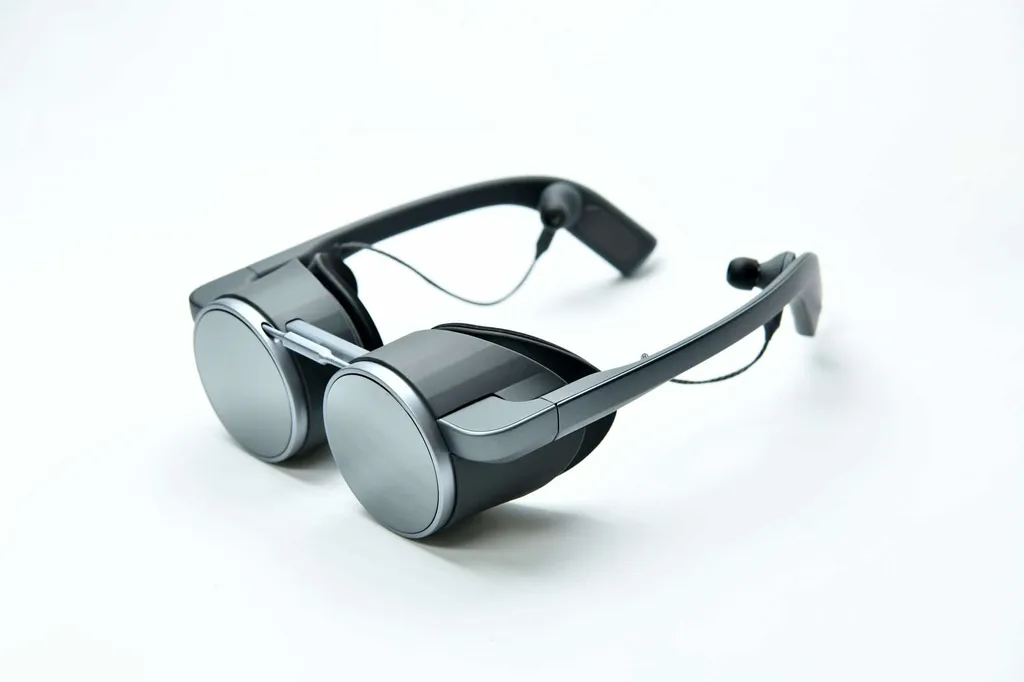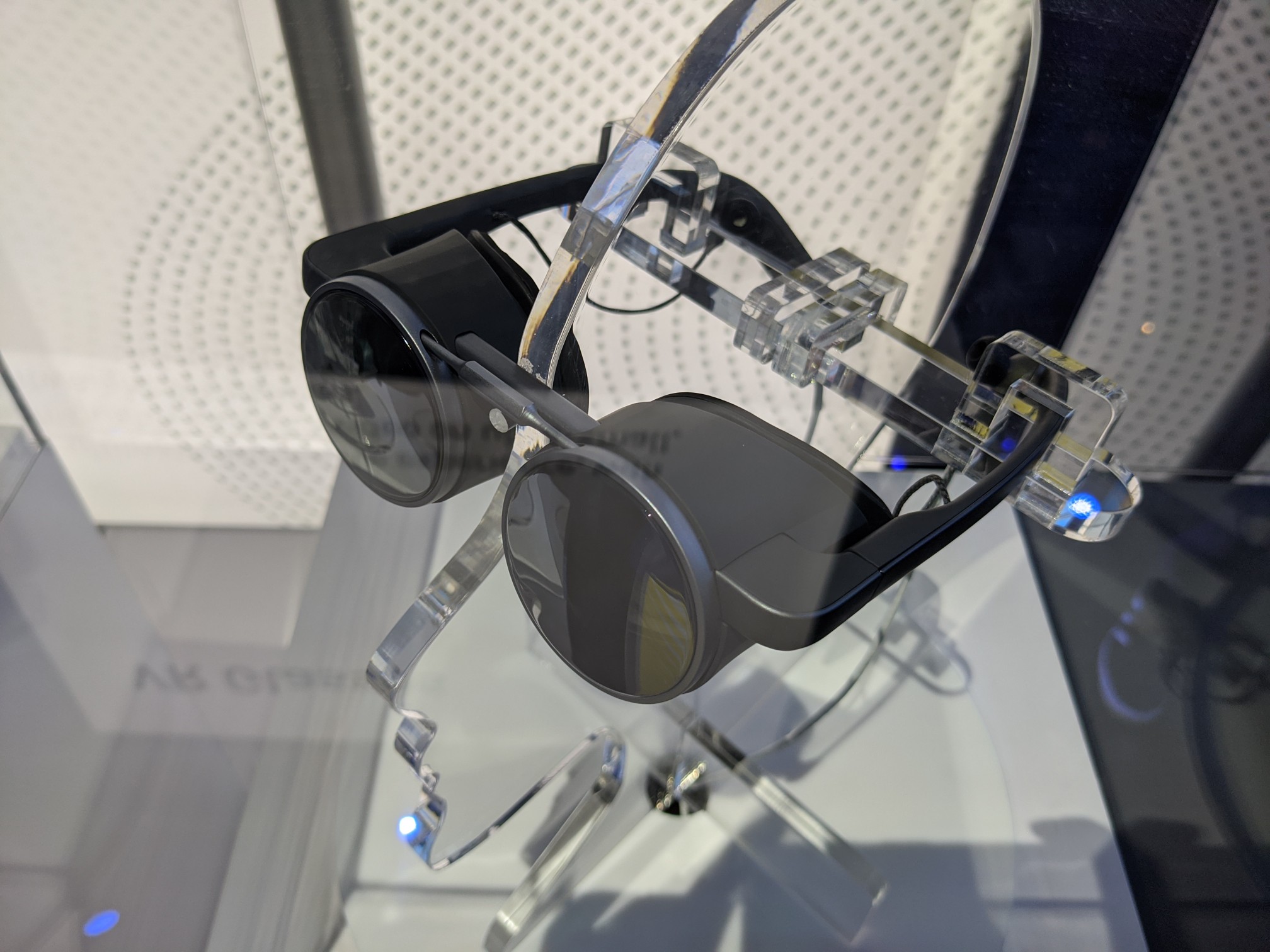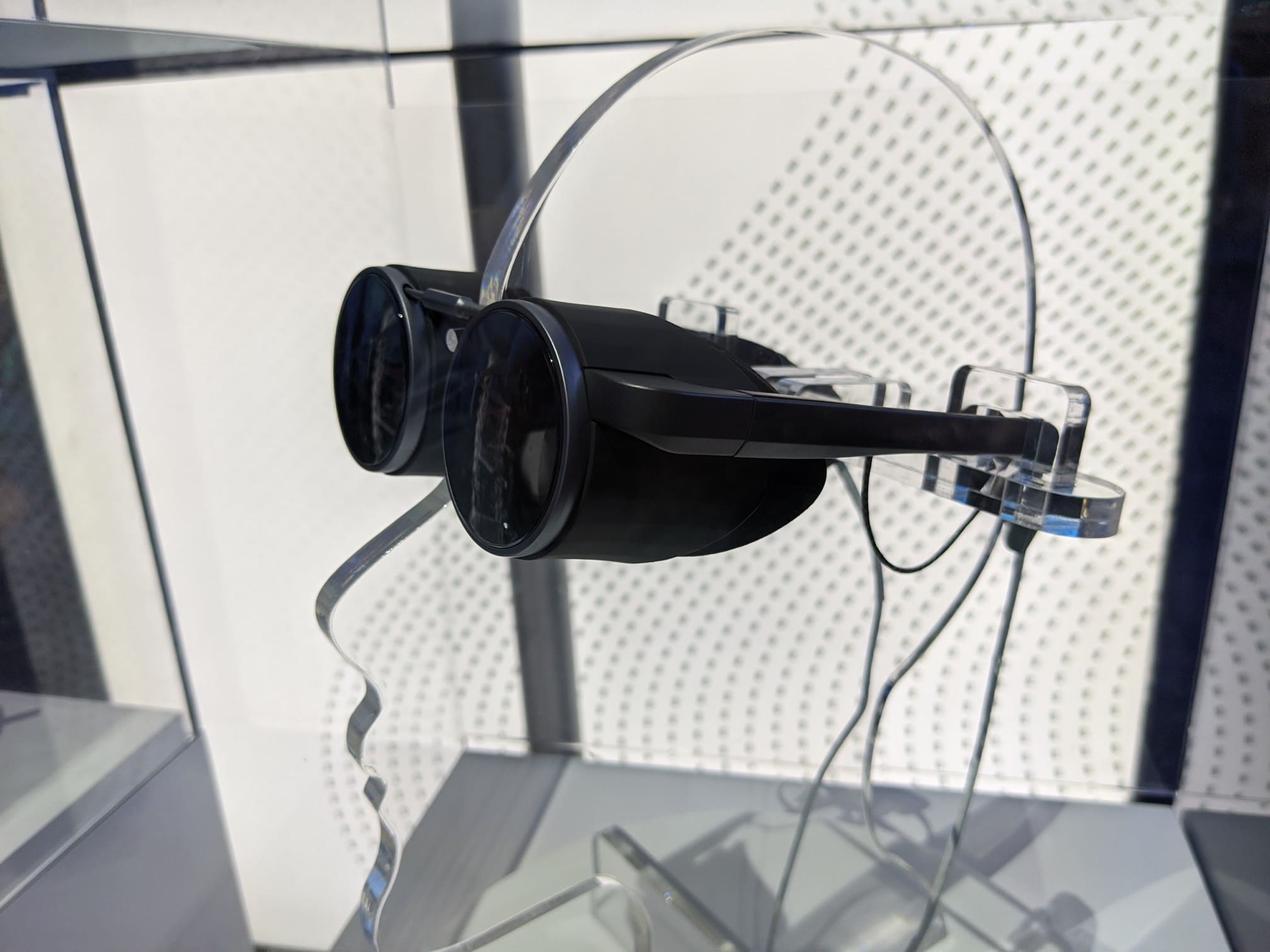At CES 2020 this week, Panasonic revealed ultra compact VR goggles with HDR displays. However, details are light and it’s not yet clear whether this is an actual product or just a concept.
The headset uses OLED microdisplays jointly developed by Panasonic and Kopin. Microdisplays are significantly smaller than regular panels and thus allow for significantly more compact headsets.
However, microdisplays tend to have a much higher production cost and their small size makes magnifying them over a large field of view challenging. Most existing headsets using microdisplays have had a relatively narrow field of view, and short of a breakthrough in optics Panasonic’s is likely no exception.
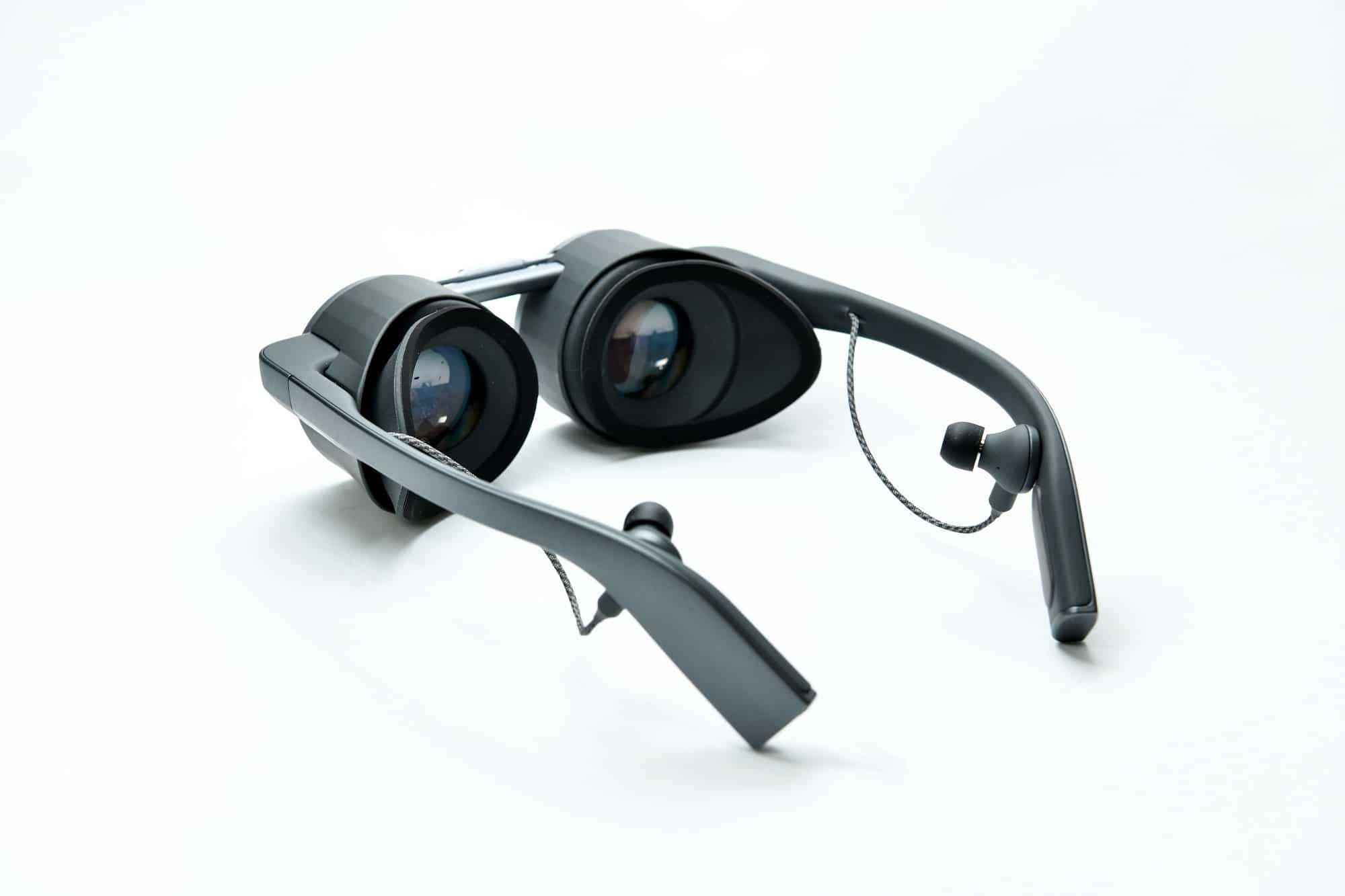
Panasonic describes the resolution as simply ultra high definition (UHD), which usually means 3840×2160. It’s unclear whether this is per-eye or shared between each eye.
The displays support High Dynamic Range (HDR) content. HDR is a feature which allows digital content to show a greater range of colors and luminance compared to the standard range of most displays. This makes the image better resemble what the human eye sees in real life.
Audio is provided by earbuds developed by Panasonic’s Technics subsidiary. The drivers use magnetic fluid to allow “the accurate stroke of the diaphragm” and achieve “ultra low distortion reproduction”.
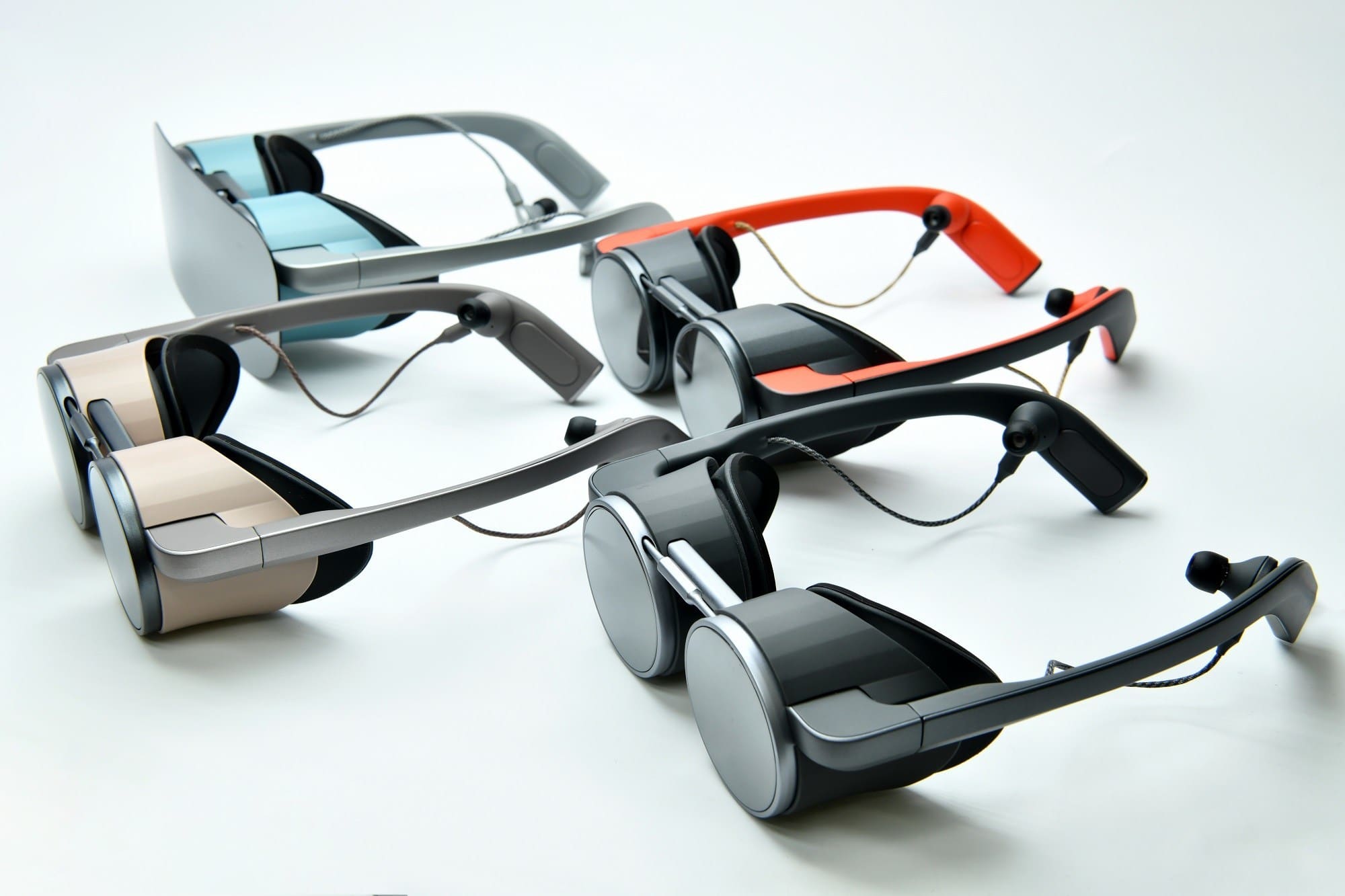
The goggles are not described as being either a product or a concept. No description of whether this is powered by a smartphone or PC was given, nor what kind of content platform it will support. In the images provided there is no sign of a port where a cable would even plug in.
In a statement, Panasonic said it will “continue to further develop the new VR glasses so that they can be used in a variety of applications, thereby creating new customer value“- whatever that means.
VR headsets today are bulky and heavy, making wearing them for extended periods uncomfortable. For VR to become a mainstream device the form factor will need to shrink. Projects like this show what that future could look like, but it likely makes sacrifices in field of view to get there. Not to mention there is no mention of tracking, a microphone, or other features you’d expect in an actual product.
Don’t forget to check out our CES 2020 Coverage Hub right here for all of the latest announcements for VR and AR tech from the show!

